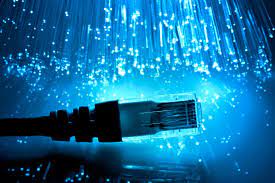When you connect your PSP to your wireless network, you’ll not only have the option to link up with players online, you can also browse the Web, download RSS content or listen to Internet radio (and if you have a PS3, stream content stored on it to the PSP).
by Joseph Moran
Now that the holidays are over, you may be lucky enough to find yourself in possession of shiny new handheld game consoles — either a Sony PSP or a Nintendo DS. These devices can, of course, be used for solo gaming, and their Wi-Fi support allows for ad-hoc connections to other nearby devices for head-to-head gaming. But did you know you can also connect both consoles to the Internet via a home WLAN?
Sony PSP
When you connect your PSP to your home wireless network (or a hotspot, for that matter) you’ll not only have the option to link up with far-flung players online (depending on the specific game), you’ll also be able to browse the Web, download RSS content, or listen to Internet radio (and if you have a PS3, stream content stored on it to the PSP).
The PSP’s Wi-Fi support is limited to the older 802.11b type, so before attempting to set one up for network access, be sure your wireless router is set to mixed b/g mode. The steps for doing this vary by router make and model, but you should find them under the heading Wireless Settings or something similar.) Fortunately, the PSP supports WPA–PSK security (both the TKIP and AES encryption methods), so you won’t have to dumb down your WLAN’s security to use the PSP on it.
The steps for getting the PSP networked are the same whether you have the newer, slimmer version or the original model. First, make sure wireless is enabled on the PSP by sliding the switch on the lower left side to the up position. Turn on the PSP and find the Settings menu (it should be the left-most option) then scroll all the way down until you reach Network Settings.
Now select Network Settings, then Infrastructure Mode, then New Connection. Next, select the Scan option, which will have the PSP locate your wireless network (assuming that, like most, your router is set to broadcast the SSID). When your network is found, select it with the X button and then press the right arrow to go to the WLAN Security Setting menu, where the type of security the network uses should already be highlighted. When you press right arrow again you’ll be prompted to press X to enter your encryption key. Entering alphanumeric text can be somewhat cumbersome on the PSP (as it almost always is on a device without keyboards/keypads). When you’re done, press Start to save the key. (No matter how long your key is, it will only show up as eight asterisks.)
Press right arrow again to bring up the Address Settings menu, which offers a choice between Easy and Custom. If you use DHCP on your network, you can choose the former. Right arrow again will allow you change the connection name to something other than the WLAN’s SSID (which, of course, does not change). Another right arrow will let you review your connection settings, and after a final right arrow and pressing the X key, your settings will be saved.
When you see Test Connection displayed, press X to make sure your settings are correct. If they are the PSP will display connection information, including the IP address it obtained. (You can repeat the connection setup process and save settings for up to 10 different networks.)
You’ll find the PSP’s various network applications, including the Web browser, under the Network menu. By the way, to allow the PSP’s browser to display Flash-based animations and movies, look for System Settings under the Settings menu and choose the Enable Flash Player option.
Note that to conserve battery life, the PSP will not remain constantly connected to a wireless network, so after a period of inactivity there will be a slight delay as the device re-establishes its connection. (You can prevent the PSP from going online at all by sliding the wireless switch to the down position.
Nintendo DS
Like the PSP, Nintendo’s DS console has built-in Wi-Fi support and can connect to the Internet, but it works quite differently. To be exact, the DS doesn’t allow for Web browsing or generic Internet access like the PSP. Rather, it supports network connectivity only in the context of a game, and then only for specific titles. As of this writing, about two dozen DS games support Wi-Fi access — for the complete list, go here.
Another limitation of the DS is that its wireless encryption support is limited to WEP, which as you probably know isn’t a very attractive option. That said, using WEP for a few hours probably isn’t the end of the world as long as you remember to go back to WPA and are OK with depriving other wireless devices of access to your WLAN while the DS is connected. (I certainly wouldn’t advocate leaving your network unprotected, even temporarily, for the purpose of getting a Nintendo DS online.)
In order to access Wi-Fi connection settings on the DS, you’ll need to have one of the Wi-Fi compatible games inserted. Look for Wi-Fi Connection Settings under the game’s menu, and to set up a connection, click on the large blue button. Then click one of the three connection slots, and then clickSearch for an Access Point. Within a few moments the DS should find your network and display it with a padlock icon. If the icon is blue it means your network is open, and if red, WEP-encrypted. (Gray means it’s using WPA or some other form of encryption the DS doesn’t understand.) If your network is open or using WEP, select it and provide the WEP key if appropriate. Return to the game menu, and consult the game’s manual for details on how to connect to players over the Internet.
Joe Moran is a regular contributor to PracticallyNetworked.




